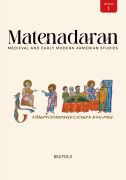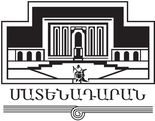Irénée de Lyon, lecteur des Présocratiques ?
Abstract
L’original grec de l’Adversus haereses d’Irénée de Lyon est perdu depuis très longtemps. Seules subsistent les traductions latine, complète en cinq livres, et arménienne avec les seuls deux derniers. Dans l’unique manuscrit arménien, nous lisons au chapitre 20.1 du livre V le mot եւթնոստեան (« qui a sept branches ») auquel correspondent dans les manuscrits latins les mots eptamyxos, eptomyxos ou eptonixos. Ces adjectifs qualifient respectivement աշտանակ et lucerna, mots qui signifient candélabre ou lampe. Nous ne savons pas quel était exactement le mot grec que le traducteur arménien a traduit et que le traducteur latin n’a fait que transcrire, et que certains copistes ont altérés. Cette différence de traitement nous interroge. Si le terme grec signifiait « qui a sept branches », la traduction en latin n’était pas une difficulté. Et si, à raison, le traducteur latin n’a pas traduit, pourquoi l’arménien l’a-t-il fait ? Les compréhensions divergentes du terme grec sont le point de départ de la présente étude.
Nous disposons de deux indices pour tenter d’apporter une réponse. D’une part, il existe une seconde occurrence du mot եւթնոստեան dans l’œuvre d’Irénée. Elle est située dans l’Epideixis, au chapitre 9, où l’auteur christianise la description de la cosmologie païenne en sept cieux concentriques, comme autant de grottes imbriquées. D’autre part, le mot translittéré eptamyxos lu dans les manuscrits de la tradition latine, parfois aussi orthographié eptomyxos ou eptonixos, transcrit possiblement ἑπτάμυχος (« qui a sept cavités »), un mot que la Suda associe à l’œuvre cosmologique du mythographe présocratique Phérécyde de Syros (Φερεκύδης). Ces deux faits ont un point commun : la cosmologie. Mais si le latin translittère ἑπτάμυξος (« qui a sept mèches »), cela nous oriente vers les lampes à huile de l’antiquité dont on faisait brûler les mèches. Bien que cette lecture soit compatible avec եւթնոստեան աշտանակ, le chandelier à sept branches, c’est-à-dire la menorah, elle n’explique pas pourquoi le traducteur latin n’a pas traduit précisément ce mot grec et pourquoi Érasme, dans son editio princeps de la version latine a préféré ἑπτάμυχος.
Donc si le parallèle cosmologique n’est pas une simple coïncidence, est-il possible qu’Irénée ait connu l’œuvre de Phérécyde ? nous ne pouvons le corroborer et la question demeure, spéculative et ouverte.
Abstract
The Greek original of Irenaeus of Lyon's Adversus haereses was lost very long time ago. Only a Latin translation, complete in five books, and an Armenian translation, with only the last two books, have survived. In chapter 20.1 of Book V of the unique Armenian manuscript, we read the word եւթնոստեան (“with seven branches”) to which in the Latin manuscripts correspond the words eptamyxos, eptomyxos or eptonixos. These adjectives describe աշտանակ and lucerna respectively, words meaning candelabra and lamp. We don't know exactly which Greek word the Armenian translator translated, the Latin translator merely transcribed, and some copyists altered. This difference in treatment raises questions. If the Greek word meant “with seven branches”, the Latin translation was not to be a problem. And if, for a good reason, the Latin translator did not translate, why did the Armenian? The divergent understandings of the Greek term are the starting point for the present study.
We have two clues to try to provide an answer. On the one hand, there is a second occurrence of the word եւթնոստեան in Irenaeus's work. It is in the Epideixis, in chapter 9, where the author Christianizes the description of pagan cosmology in seven concentric heavens like as many interconnected caves. On the other hand, the transliterated word eptamyxos read in manuscripts of the Latin tradition, sometimes also spelled eptomyxos or eptonixos, possibly transcribes ἑπτάμυχος (“with seven cavities”), a word that the Suda associates with the cosmological work of the pre-Socratic mythographer Pherecydes (Φερεκύδης) of Syros. These two facts have one thing in common: the cosmology. But if the Latin transliterates ἑπτάμυξος (“with seven wicks”), this directs us towards the oil lamps of antiquity, the wicks of which were burned. Though this reading is compatible with եւթնոստեան աշտանակ, the seven-branched candlestick, i.e. the menorah, it does not explain why the Latin translator did not translate the Greek word precisely, and why did Erasmus in his editio princeps of the Latin version prefer ἑπτάμυχος.
So if the cosmological parallel is not a mere coincidence, is it possible that Irenaeus knew Pherecydes’ work? We cannot corroborate that, and the question remains speculative and open.
Downloads
Published
How to Cite
Issue
Section
License
Copyright (c) 2024 Matenadaran: Medieval and Early Modern Armenian Studies

This work is licensed under a Creative Commons Attribution-NonCommercial 4.0 International License.



